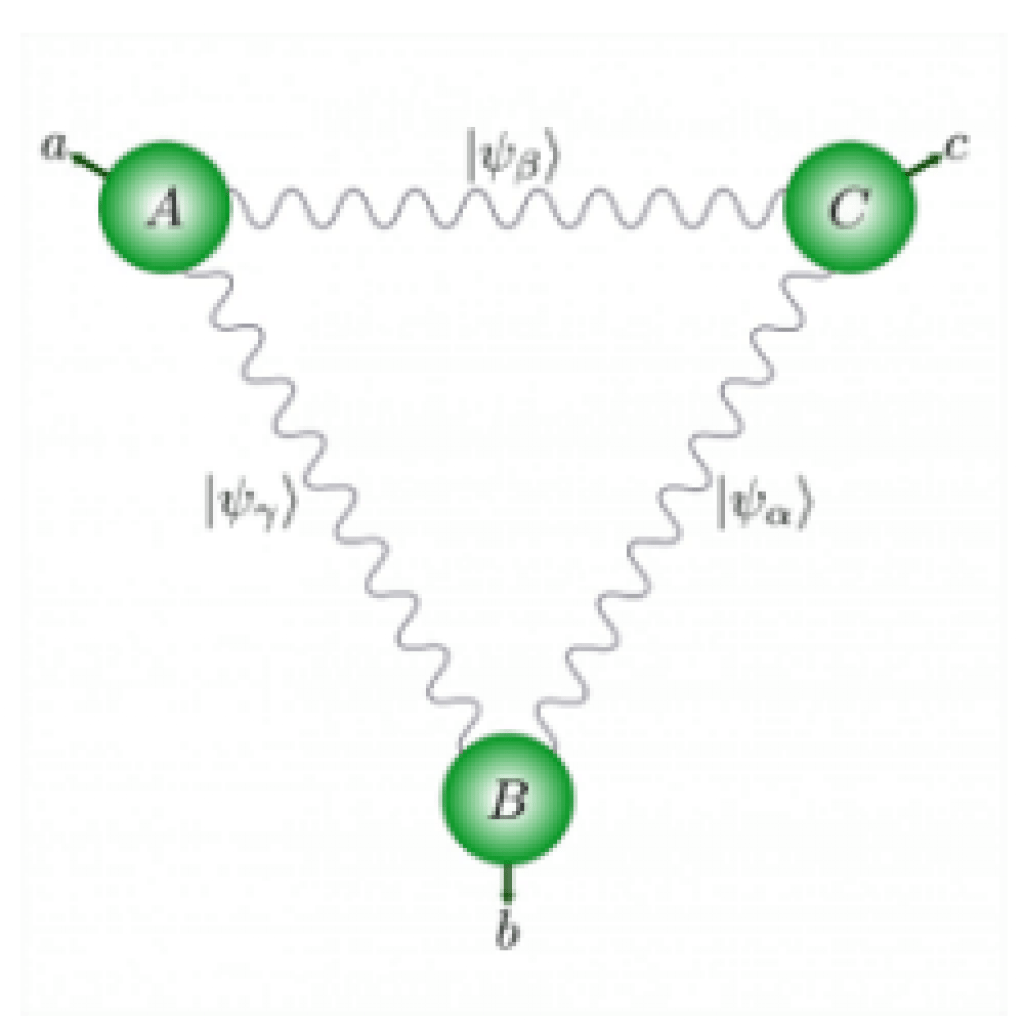(EurekaAlert) Researchers at the University of Geneva (UNIGE), Switzerland, working in partnership with Tehran’s Institute for Research in Fundamental Sciences (IPM), placed three pairs of entangled photons are placed in a network and proved that this arrangement allows for a new form of quantum correlation in theory. When the scientists forced two photons from separate pairs to become entangled, the connection was also made with their twin photon present elsewhere in the network, forming a highly-correlated triangle. These results, which you can read all about in the journal Physical Review Letters, create the potential for new applications in cryptography while reviving quantum physics at its most fundamental level.
what are the implications of this principle of quantum non-locality when several pairs of photons are placed in a network? “To answer this question, we devised an experiment involving three pairs of photons that were then separated and dispersed to three points forming a triangle”, explains Marc-Olivier Renou, who is also a researcher in the Department of Applied Physics. “At each vertex, two photons from a different pair are processed together.”
The physicists subsequently forced the two photons at each vertex of the triangle to entangle by making them interact with each other, before measuring them. They finally showed that the statistics arising from these measurements cannot be explained by any local physical theory. In addition, these statistics are so strongly correlated that they could represent a new form of quantum correlations. “It could become a new version of Bell’s theorem, specific to quantum networks”, enthuses Nicolas Brunner, associate professor in the Department of Applied Physics in UNIGE’s Faculty of Science.
A Quantum Network with a Triangular Structure
